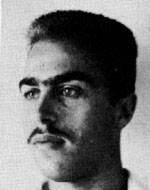Stadler, Yitzhak (“Itzik”, “Itzla”)
Son of Zvi and Carlotta. He was born on May 25, 1945 in Buenos Aires, Argentina. He received his Zionist pioneering education in his parents’ home, which was active in Argentina. It was the Home and the Movement (Hashomer Hatzair) that instilled in him the aspiration to immigrate and the faith in the homeland. He was fourteen years old when he immigrated to Israel, and he was a lively, lively and intelligent young man, but he was able to overcome them with stubbornness and perseverance and with a clear vision of the future. He attended elementary school in the “Sammat” vocational school near the Hebrew Technion in Haifa. He was very successful in his studies and in his work in Israel, and he easily achieved the level of the school in general studies and with great effort, his Hebrew studies, he was meticulous in precision and diligence, and he also felt that the house was in the kingdom of beauty and sound. And it was worth mentioning that in his lifetime he longed to change his name to a Hebrew name and offered his father the name “Shahar” instead of Stadler, which he used on his copper plates, but he never used it officially. In 1963 he was drafted into the IDF and fulfilled his duties with dedication and responsibility. After his discharge from the army, he enrolled in the Faculty of Agricultural Engineering of the Hebrew Technion, where his character and character grew stronger and deepened, and in this faculty he developed the blessed initiative, the fruitful and thirsty diligence He was one of the first to be called to the flag before the Six-Day War and came out of a belief in the justice of the matter, convinced that this was the only way. Morham marched toward the enemy on the fifth day Booth, is a Sivan Tsc”z (09/06/1967), fell in battle Deirdre held the post in the Golan Heights, as it is the first illegal immigrant, trying to purge gun position blocking the movement of his unit, according to testimony commander. He was buried in the military cemetery in Afula and was later transferred to the eternal military cemetery in Haifa. His name was immortalized in the book Nachshoni HaGolan. Hakibbutz Hame’uchad’s memoir “Who Fell in the War” was mentioned. From his estate was brought in volume 4 of “Goily Ash”, the school bag of the sons of the fallen soldiers in Israel.
